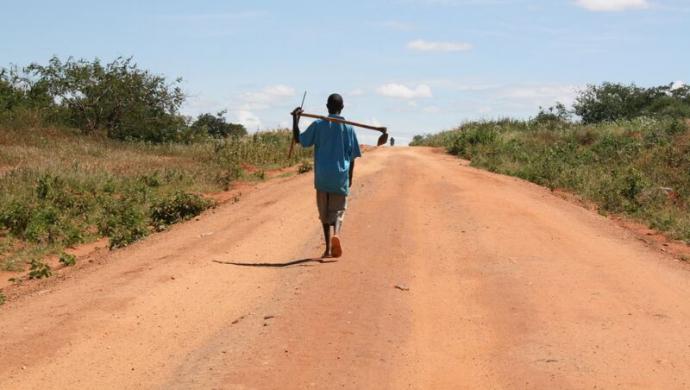Antallet af børn, der bliver ofre for menneskehandel, er i stigning, viser ny FN-rapport. Særligt i Afrika og Mellemøsten er det et omfattende problem – her udgør børn hele 62 procent af trafficking-ofrene. Antallet af handlede inden for tvangsarbejde er generelt stigende.
24 November 2014 (UNODC): The 2014 Global Report on Trafficking in Persons released today in Vienna and in various UNODC field office locations across the world shows that one in three known victims of human trafficking is a child – a 5 per cent increase compared to the 2007-2010 period.
Girls make up 2 out of every 3 child victims, and together with women, account for 70 per cent of overall trafficking victims worldwide.
“Unfortunately, the report shows there is no place in the world where children, women and men are safe from human trafficking,” said UNODC Executive Director Yury Fedotov.
“Official data reported to UNODC by national authorities represent only what has been detected. It is very clear that the scale of modern-day slavery is far worse.”
A third are girls and women
No country is immune – there are at least 152 countries of origin and 124 countries of destination affected by trafficking in persons, and over 510 trafficking flows criss-crossing the world.
Trafficking mostly occurs within national borders or within the same region, with transcontinental trafficking mainly affecting rich countries.
In some regions – such as Africa and the Middle East – child trafficking is a major concern, with children constituting 62 per cent of victims.
Trafficking for forced labour – including in the manufacturing and construction sectors, domestic work and textile production – has also increased steadily in the past five years.
About 35 per cent of the detected victims of trafficking for forced labour are female.
There are, however, regional variations: victims in Europe and Central Asia are mostly trafficked for sexual exploitation, whereas in East Asia and the Pacific forced labour drives the market.
In the Americas, the two types are detected in almost equal measure.
Few or no convictions
Most trafficking flows are interregional, and more than 6 out of 10 victims have been trafficked across at least one national border.
The vast majority of convicted traffickers – 72 per cent – are male and citizens of the country in which they operate.
The report highlights that impunity remains a serious problem: 40 per cent of countries recorded few or no convictions, and over the past 10 years there has been no discernible increase in the global criminal justice response to this crime, leaving a significant portion of the population vulnerable to offenders.
“Even if most countries criminalize trafficking, many people live in countries with laws which are not in compliance with international standards that would afford them full protection, such as the Trafficking in Persons Protocol.” Mr. Fedotov said.
“This needs to change,” added Mr. Fedotov.
“Every country needs to adopt the UN Convention against Transnational Organised Crime and the protocol and commit themselves to the full implementation of their provisions.”
Læs hele rapporten hos UNODC














